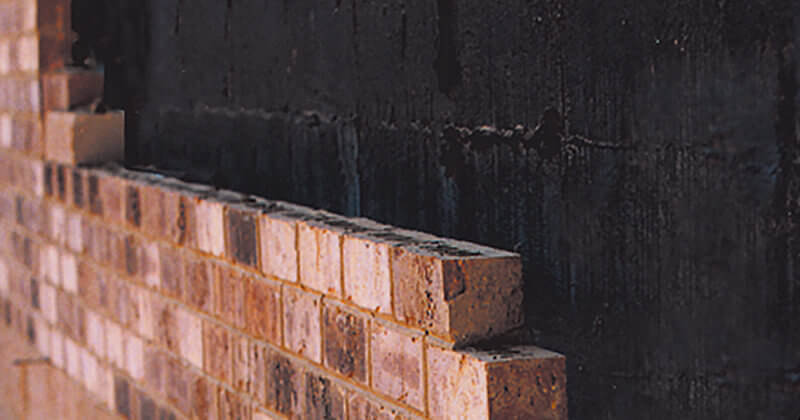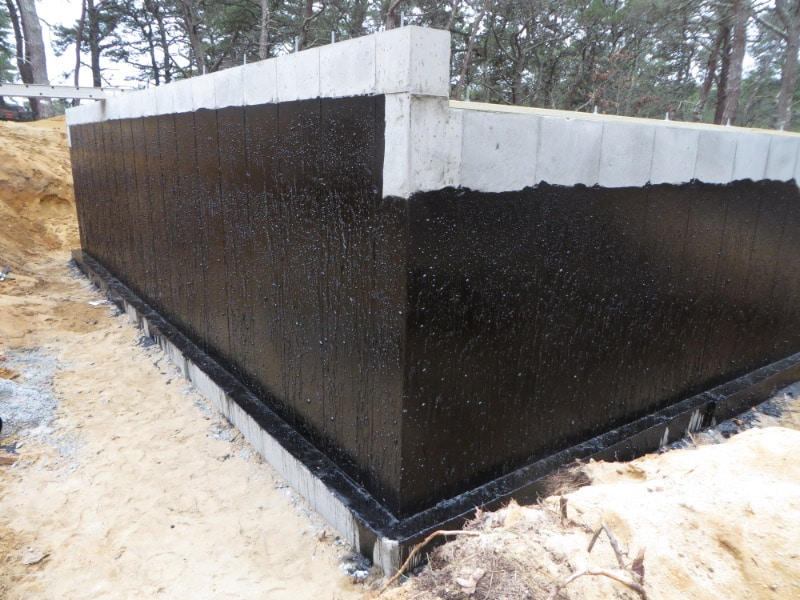Fighting indoor moisture through mould removal newcastle: What really works?
Fighting indoor moisture through mould removal newcastle: What really works?
Blog Article
Checking Out the Numerous Strategies and Solutions for Effective Damp Proofing
Wetness in buildings postures significant challenges to both structural stability and indoor air high quality. Various methods and solutions have actually arised to battle this prevalent concern. From typical damp-proof membranes to ingenious chemical treatments, each approach supplies one-of-a-kind benefits. Comprehending these options is vital for effective moisture control. Selecting the best solution depends on specific building conditions and requirements, prompting additional exploration right into the most reliable wet proofing techniques available.
Recognizing the Reasons For Wetness
Dampness can emerge from numerous resources, recognizing these reasons is crucial for efficient removal. Generally, dampness stems from three primary sources: climbing damp, penetrating damp, and condensation. Increasing moist occurs when groundwater takes a trip upwards via permeable materials, such as block or stone, often due to an absence of an effective obstacle (damp specialist newcastle). Passing through damp is usually created by outside elements, consisting of roof leaks, damaged gutters, or harmed walls, enabling water to penetrate a residential property. Condensation, on the other hand, results from excess wetness airborne, often exacerbated by poor ventilation and temperature level differences, resulting in water droplets basing on surface areas. Recognizing these underlying issues is important, as each kind of wetness needs a tailored method for removal. Appropriate analysis helps in establishing the most effective options, eventually guarding the architectural stability of a building and improving indoor air high quality
Conventional Damp-Proof Membrane Layers

Chemical Damp-Proofing Solutions
Chemical damp-proofing solutions offer an ingenious approach to stop moisture invasion in buildings. These techniques normally involve the application of fluid chemicals that permeate masonry and create an obstacle versus climbing damp. Frequently made use of chemicals consist of silanes, siloxanes, and other water-repellent representatives that react with surface area products to produce a hydrophobic layer.The application procedure typically calls for drilling openings into the walls, infusing the chemical service, and allowing it to treat. This approach is specifically advantageous for older frameworks where traditional damp-proof membranes may be impractical. Chemical damp-proofing can be less disruptive and much more cost-efficient than considerable restoration projects.While efficient, these services depend on appropriate application and ecological problems for peak efficiency. damp removal newcastle. Routine upkeep and tracking are vital to guarantee the durability of the damp-proofing therapy. Overall, chemical damp-proofing represents a functional choice for guarding structures against moisture-related damages
Cavity Wall Surface Construction Techniques
Dental caries wall building and construction methods use numerous advantages, especially in moisture control and energy effectiveness. By integrating an air space in between two layers of masonry, these walls successfully alleviate water access while improving insulation. This mix not only shields structures from dampness but also contributes to decreased power usage.
Advantages of Dental Caries Walls
When taking into consideration efficient wet proofing approaches, the benefits of tooth cavity walls stick out plainly. Dental caries walls include 2 different layers, creating an air void that efficiently decreases dampness infiltration. This style minimizes the danger of moisture, as the external wall serves as a barrier against rainfall and water ingress. Additionally, dental caries wall surfaces enhance thermal insulation, which adds to energy efficiency by lowering heat loss. They likewise provide sound insulation, helping to create a quieter interior atmosphere. The air space allows for ventilation, which helps in dampness control and lowers the likelihood of mold development. These benefits not only boost the total convenience of a building yet additionally add to its longevity and architectural honesty.
Moisture Control Strategies
Reliable moisture control approaches are vital in dental caries wall surface building to ensure long-term protection against dampness. One primary approach involves the incorporation of weep openings, which promote water drainage from the dental caries, stopping build-up. In addition, the use of breathable membrane layers can help manage wetness levels while enabling entraped vapor to leave. Appropriate placement of insulation is additionally crucial, as it needs to not block drain courses. In addition, making sure that the external leaves of the dental caries wall surface are created with water-resistant materials enhances total toughness. Normal maintenance checks are vital to recognize any type of clogs or damage early, guarding the structure's integrity. here Inevitably, a mix of these methods develops a robust protection against moisture breach in cavity wall surfaces.
Insulation and Energy Performance
Insulation plays a vital duty in enhancing power performance within tooth cavity wall building. By incorporating protecting products, these wall surfaces develop a thermal barrier that reduces warmth loss and minimizes energy usage. Effective insulation not just aids preserve a stable indoor temperature level yet additionally reduces the danger of dampness, as it stops condensation within the wall dental caries. Various strategies, such as the use of rigid foam boards or mineral woollen, can be employed to achieve suitable insulation efficiency. In addition, correct installment is necessary to ensure that voids and spaces are reduced, which can or else endanger power efficiency. Inevitably, a well-insulated dental caries wall contributes greatly to general sustainability and decreases cooling and heating costs for home owners.
External Damp Proofing Approaches
Outside wet proofing methods are necessary for protecting frameworks from moisture seepage. Two efficient strategies consist of the application of waterproof membrane layers and the installation of French drains. These options assist alleviate water build-up and maintain the honesty of structures.
Waterproof Membrane Layer Application
While various approaches exist for stopping dampness ingress, the application of water-proof membranes continues to be a highly efficient external moist proofing strategy. These membrane layers are normally made from materials such as polyethylene, rubber, or customized bitumen, providing a robust barrier versus water infiltration. The installment procedure involves using the membrane to the exterior surface areas of walls or structures, making sure complete protection to stop leakages. Appropriate adhesion and sealing at joints are essential to making best use of performance. Waterproof membrane layers can be used in various types, including fluid layers and sheet membrane layers, enabling flexibility based upon the specific demands of the structure. This technique not just safeguards structures from wetness however likewise improves their long life and structural honesty.
French Drain Installation
One efficient technique for managing groundwater and protecting against wetness build-up around a building's foundation is the setup of a French drain. This water drainage system includes a trench filled up with crushed rock and a perforated pipe that reroutes surface area water away from the foundation. Correct installation requires careful preparation, making certain that the drain inclines away from the framework to assist in suitable water flow. In addition, the place of the drainpipe is vital; it must be placed in locations susceptible to merging or excess dampness. Normal upkeep, consisting of clearing particles from the crushed rock and making certain the pipe stays unobstructed, is necessary for long-term efficiency. Inevitably, a well-installed French drain can considerably minimize the danger of water-related issues in cellars and foundations.
Inside Waterproofing Strategies
Interior waterproofing approaches are essential for securing a building's interior from wetness seepage and potential water damage. These methods typically involve the application of specialized materials and methods designed to produce a moisture obstacle within the structure. One common method is making use of water resistant coatings or sealants on wall surfaces and floors, which stop dampness from permeating surfaces.Additionally, installing interior water drainage systems, such as sump pumps, can efficiently handle water accumulation in basements and creep spaces. One more method involves using vapor obstacles, which are mounted to inhibit dampness motion from the ground right into living spaces.Moreover, attending to any cracks or voids in walls or structures with ideal sealants assures a detailed defense against water breach. By implementing these interior waterproofing approaches, homeowner can substantially reduce the risk of mold and mildew development, structural damages, and other moisture-related issues. Appropriate execution of these methods is essential for long-term defense and structure stability.
Regular Maintenance and Assessment Practices
Routine upkeep and inspection techniques are crucial for assuring the lasting performance of damp proofing services in any structure. Regular checks make it possible for residential or commercial property proprietors to determine very early indicators of moisture breach, such as peeling off paint, mold growth, and mildewy odors. These signs can indicate underlying issues that require immediate attention.Inspections should be conducted at the very least annually, concentrating on susceptible locations like cellars, crawl rooms, and exterior wall surfaces. Throughout these evaluations, building owners need to take a look at sealers, drain systems, and ventilation to verify they function correctly.Additionally, keeping seamless gutters and downspouts is crucial, as clogged systems can result in water build-up near the structure. Applying a routine maintenance timetable, together with timely repair services, can significantly prolong the lifespan of damp proofing steps and protect the architectural honesty of the structure. Aggressive procedures eventually contribute to the overall health and wellness of the living environment.
Regularly Asked Concerns
The Length Of Time Does Damp Proofing Generally Last?
The duration of moist proofing performance varies, normally lasting between 20 to half a century. Aspects such as application top quality, environmental conditions, and maintenance practices significantly affect the longevity of the damp proofing therapy.

Can I Damp Proof My Home Myself?
The private contemplated the usefulness of do it yourself damp proofing. With appropriate study and the appropriate materials, it is possible. They additionally recognized the significance of professional guidance to ensure lasting efficiency and prevent future concerns.
What Are the Indications of Ineffective Damp Proofing?
Indications of inefficient wet proofing consist of persistent musty smells, visible mold and mildew development, peeling paint, wet spots on walls, and wood decay - damp removal newcastle. Homeowners should attend to these issues immediately to stop more damages and wellness issues
Does Damp Proofing Affect Indoor Air High Quality?

Just How Much Does Expert Damp Proofing Price?
Professional damp proofing expenses vary considerably, typically varying from $1,000 to $5,000 depending on the residential property's size, the extent of the wet concern, and chosen approaches. Each circumstance calls for a tailored evaluation for exact pricing. Generally, moisture originates from three primary sources: rising moist, permeating moist, and condensation. When taking into consideration reliable wet proofing techniques, the benefits of tooth cavity wall surfaces stand out prominently. Exterior wet proofing techniques are vital for shielding structures from dampness infiltration. While numerous methods exist for stopping dampness access, the application of water resistant membranes stays an extremely reliable external damp proofing technique. Indications of ineffective damp proofing consist of consistent moldy odors, visible mold development, peeling paint, wet spots on wall surfaces, and wood decay.
Report this page